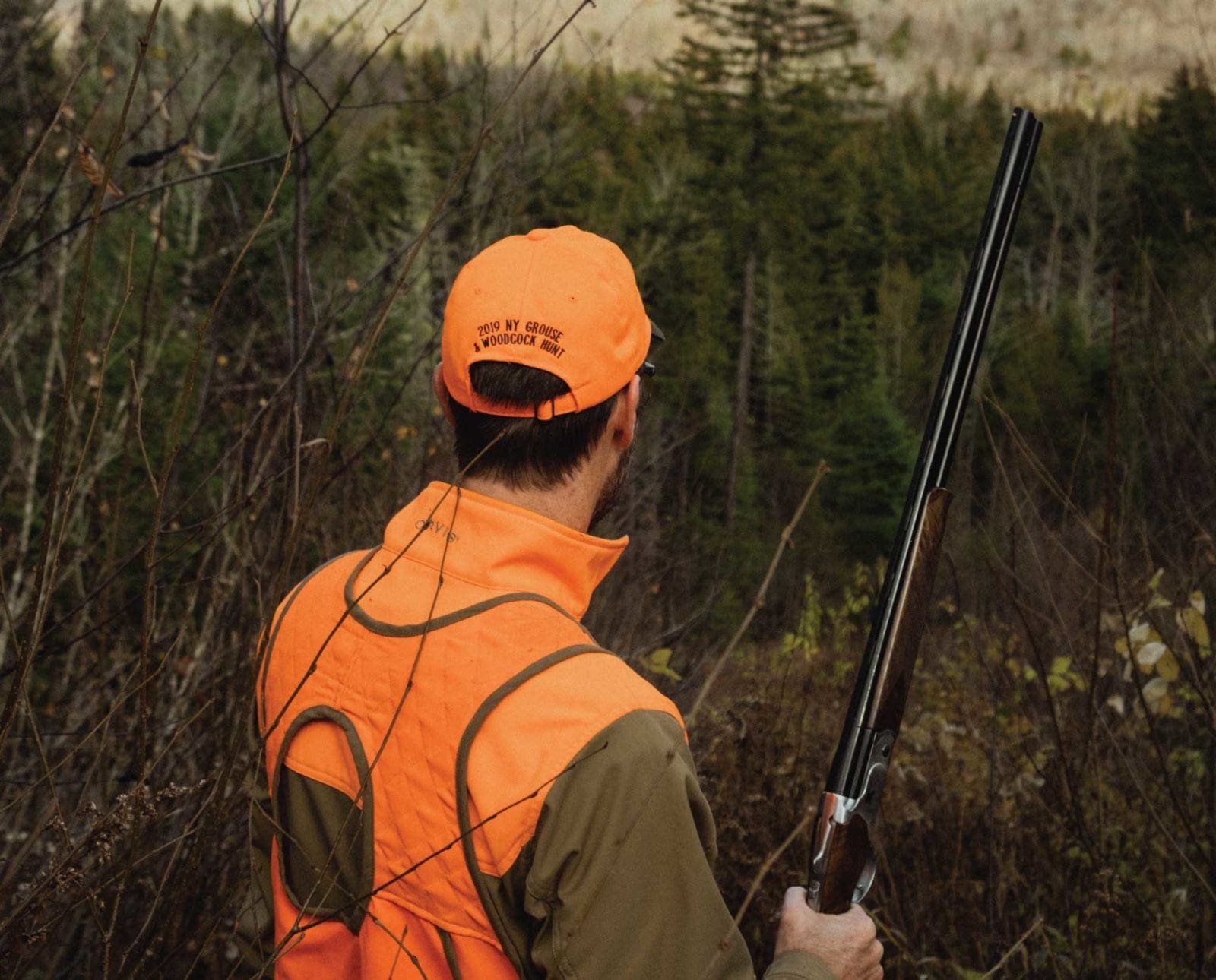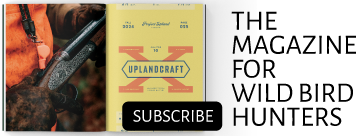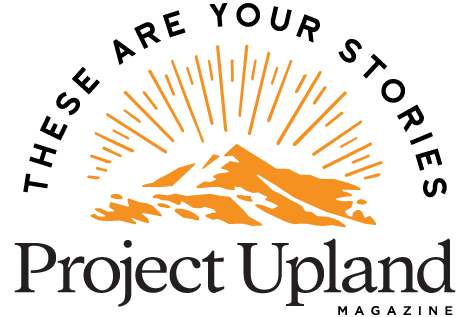Home » Grouse Species » Ruffed Grouse Hunting » How Pausing Causes Ruffed Grouse to Flush
How Pausing Causes Ruffed Grouse to Flush

Ryan Lisson is a biologist and regular content contributor to…
How taking your time can equal more upland bird shooting opportunities.
If you’re like most hunters, you probably feel like there’s just not enough time for hunting. Schedules seem to fill up pretty fast in the fall. Whether we have one free Saturday to hunt or want to cover more ground, we’re in a rush. While it makes sense that walking extra miles should expose you to more upland birds, the opposite can also be true. In fact, taking your time and being thorough will often result in a heavier vest at the end of the day. This is where mastering the art of pausing comes into play.
Why Pausing Works with Upland Hunting
Most of the animals we hunt each autumn, especially small game animals and upland birds, rely heavily on good camouflage and lying motionless to keep them off the average predator’s dinner menu. It usually works pretty well for them. You’ve probably almost stumbled on a bird while ruffed grouse hunting before they flushed, right? But when a predator is too close for comfort and stops suddenly it sends a clear message to the prey: “You’ve been spotted.”
At that moment, they will usually flush from cover to seek a new hiding place far away from the hungry jaws or eager shotgun behind them. You can use that instinct against them. Whether or not you actually see a bird when you stop isn’t important. What is important is that you’re ready for action each and every time you pause.
A Word of Caution
Before you mentally file this away as a tactic for next fall, read the following warning: do not pause if you’re not ready to make a shot.
I’ve paused in the woods before to grab some water or answer a text message (don’t worry about the reason). Inevitably when the birds erupted around me, I was unprepared and was left standing frustrated with a pocket full of shells instead of a warm bird.
Before you stop, make sure to find a place you could actually shoot from. A small opening is a good place—a tangled thicket is not. Get your feet planted in a shoulder-width stance with your shotgun in either the port arms position (held diagonally across your body with the muzzle facing up to the left) or partially mounted. It would help to keep your head on a swivel too, since birds can appear from anywhere around you.
Mostly use the opportunity to listen for the telltale chirps that grouse make right before they flush. It can give you an indication of where they will show up and which direction you should start mounting your shotgun. Remember to use your eyes to scan the cover around you. You might just spot one before it even takes wing.
Making the Most of the Pause
How much should you stop throughout the day? It’s a fine balance. You want to cover some ground, but don’t want to move too fast. Pause for a five to eight second count every 30 yards, or whatever your maximum effective shooting range is. That way, if you were too far away from a bird to flush it on one pause, you may be close enough on the next. If you come across a pretty barren stretch where you don’t expect to see birds, you can skip some pauses or move faster to offset the time you spend in high-quality habitat.
This is a fantastic solo hunting tactic when you have no human or canine hunting partner to flush birds for you. It’s also deadly on young and uneducated birds at the beginning of the season and can work throughout the fall.
As the survivors learn our tricks, you might have to make one tweak. Educated grouse will wait to take to the skies until after you start moving again. If you anticipate that possibility and keep your gun ready, you may be able to still get a shot at these smart birds before they disappear into the brush.
There are all kinds of upland hunting techniques. If you add this one to your bag of tricks, you’ll have a better chance of having a grouse dinner next fall.
Ryan Lisson is a biologist and regular content contributor to several outdoor manufacturers, hunting shows, publications, and blogs. He is an avid small game, turkey, and whitetail hunter from northern Minnesota and loves managing habitat almost as much as hunting. Ryan is also passionate about helping other adults experience the outdoors for their first time, which spurred him to launch Zero to Hunt, a website devoted to mentoring new hunters.




I found this to be VERY true in Patagonia Arizona last December – Mearn’s quail would settle and hold… we would stop and watch the dogs as they got birdie – and KABOOM! The covey would erupt and we were simply caught unprepared, as the dogs were trailing the running and them hold birds. most of the time they were singles… but a few coveys fooled us. Great article!
Dogs will definitely force the pause to happen. Just don’t get too caught up reading the dogs while the birds flush! Thanks!
Great article, it always pays to slow down and smell the roses.
Just when I thought I had paused long enough, I resisted moving forward for another minute or so, and a swamp rocket erupted! Not every time, but often. Good article. So true.
I found the same thing last year and it reminded me of what I knew before I started hunting with a dog. I slowed down, I worked cover that my dog passed. I followed my instincts. And I paused more. Last year was better then the one before and hoping this year will be better then last. Great article. Sometimes it takes an article like this to confirm what you were thinking and gives you more confidence in what your doing.
I haven’t hunted with a dog in years, and this was a critical adaptation to make the most of my solo hunts. Here’s to both of us getting a little better next year!
Oh so true. I don’t have the luxury of a dog so I have to play that part. I’ve hunted this way for decades and it works. My best days are when it’s wet. Slip through the best stuff stopping at the ready. Even after all these years they still trick me. Normally it’s when I stop in an unsuspecting area to catch my breath and boom ! Fooled again. Sorry, but grouse have made every other form of hunting boring. Here’s to a perfect spring with high survival rate for the chicks. Fingers crossed !
The pause, or stop, to trigger a flush is especially useful when hunting without a dog. I can recall learning this as a young hunter walking trails, prior to getting my first dog. My father and uncle had always hunted without dogs, so they taught me this trick and many others. Understanding game bird behavior is key to success.
Agree!
I’m on the same situation, where for a reason or another I’ve been chasing grouse without a dog… for the last few decades. Taking frequent stops, and walking the woods doing figure 8 greatly increase the chances of flushing a bird.
Now, I know the article is now 7 years old… but does anyone know which vest is being used in the first picture?
This is how we have always hunted grouse as well, using a zigzag route, pausing routinely,and when the habitat looked better we slowed down and paused more often, usually for a count of twenty, and at the turn in the zig. Also I sometimes will stop suddenly and take a step to the side and look intently into the brush at a “bird”. Always be ready.
I have hunted this way for years and it works great. I have a 6 month old English Setter, that I will be training this season and hunting next season. She is my first bird dog. I have hunted over pointers before and always wondered why a grouse flush when humans pause but not when a dog stops and goes on point. Any idea why that is?
That’s a great point Andy – to be honest, I have no clue. Maybe it’s the size difference, although I can’t see how a more typical kind of predator (i.e., dog) would be less threatening than a human. Or maybe they’re more threatening so the birds hold tight to avoid detection? I will have to ponder that one this fall as I walk among the alders and aspens.